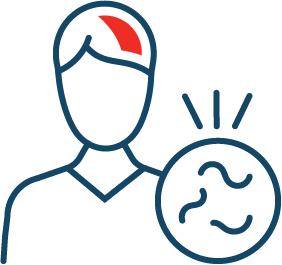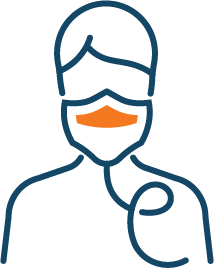.
Artificial Intelligence (AI) & Machine Learning (ML) Driven Metabolomic Stratification of Patients for Precision Therapeutics and Diagnostics
Eliminates the requirement to explicitly identify biomarkers.
About Luventix
In 2016 it was reported that dogs could sniff out cancer in human urine [1]. This inspired our founders to pursue development of diagnostic technology to replicate and scale what dogs can do with their noses via AI.
Diagnosis is the first step to better health outcomes. Today millions suffer from undiagnosed treatable illnesses. Diagnosis is expensive, requiring complex machinery, trained staff, and multiple specialists.
We believe our unique urine-based technology will be able to diagnose multiple medical conditions from a single sample, making affordable screening and diagnostics available to people worldwide. Our mechanistic AI modelling approach allows us to save up to a decade of research and development time.
What we do
At Luventix, we are pioneering Intelligent Disease Diagnostics (IDD), which uses AI to determine the probability that a person has a disease.
When you become sick, your organism changes leading to a change in your metabolic profile changes which results in changes in the composition of molecules in your urine.
We are developing tests that use gas chromatography to translate urine into a data-rich file of your metabolic profile at a moment in time, that we call your “Digital Twin.”
We then use AI, Machine Learning algorithms, and mathematical modeling techniques to analyze the data to detect the intricate patterns within a person’s “Digital Twin” and compare the patterns to previously identified disease states.
Using our Intelligent Disease Diagnostics technology, we believe we can create commercially available tests for specific diseases within a fraction of the time of traditional diagnostic test development.
How we develop disease models
The first step to creating a disease model is extracting digital data from urine.
To develop each specific disease model, we will conduct stringent clinical trials.
We will begin each trial for a specific disease with urine from multiple types of patients to replicate real-world circumstances:

patients diagnosed with the specific disease (known or un-blind sample);

healthy patients

symptomatic but either negative for the disease and/or have conditions that present similar symptoms

with diseases other than the disease for which we are modeling
What makes our Intelligent Disease Diagnostics platform unique?
Simple urine test
From a single urine sample healthcare professionals and patients can pursue the correct treatment path quickly and cost effectively.









